Hokkaido milk toast is popular Japanese-style bread that is soft, thick, fluffy and addicting. It starts with a flour and water mixture, called tangzhong, which is what gives the bread it’s incredibly soft texture that stays soft and fluffy for days.
Hokkaido milk toast is popular japanese-style bread. It’s soft, thick, fluffy and addicting. I found a recipe for Hokkadio milk toast in the 65 Degrees Tangzhong book and decided to try it out this weekend.
As you know, I love making bread using the tangzhong method, which you can read a little more about here. It takes a little more effort, but the results are worth it. The bread has such an incredible rise and stays so soft and fresh. This is something I’ve not been able to achieve with other bread recipes and I’ve been testing out a lot of bread recipes.
Anyhow, I finally got my hands on a copy of the 65 Degrees Tangzhong book which is the book that introduces the tangzhong method of making bread along with a ton of gorgeous pictures and recipes.
Of course, once I had the book, the problem is I don’t read enough Chinese to understand it. So I spent some time browsing through pictures and looking at the step by step photos. I’m slowly having my mom help me translate recipes I want to check out.
When I went through the book, the picture that stood out to me most was this recipe for Hokkaido Milk toast. The bread looks so incredibly fluffy when pulled apart. Hokkaido is an island in Japan. I believe the bread is named after a bread that is made in that region.
I followed the recipe for the most part, except that instead of splitting the bread each loaf into two sections, like the recipe called for, I did three sections. All the recipes I’ve used so far, have required the dough to be divided into four sections. To suddenly do two seemed so odd and they seemed so giant. Three sections was a nice compromise.
I was really really pleased with how the bread turned out. And the three sections came out evenly-sized, something I’ve been working on achieving as well because in the past, my four sections are not completely even and you’ll see one push over the top of another.
This bread is soft and a little bit sweet. It’s titled a “toast” as opposed to “bread” so I guess you are supposed to slice it up like toast, but I like just taking the chunks and eating the bread as is. I think if I had left the bread in two sections, it would be easier to make toast with it, since each section is so big.
Several people have asked me what kind of board I use to roll out my dough for breads. I purchased this Pastry Board* a while ago, and I love it. It’s very a sturdy wood board. The measurements written on it come in handy for measuring out how much I need to roll my dough out.
- Once you’ve combined the ingredients for the dough you will need to knead it for 18-20 minutes. I like to use my stand mixer fitted with a hook attachment. You know when the dough is ready when it is smooth and elastic. You should be able to stretch the dough very thin (called the windowpane test) before it breaks. Once it does, the hole will form a perfect circle.
- Like other yeast breads, the dough needs time to proof/rise at different points in the recipe. It also needs time to rest between different steps, so be sure you plan for this additional time.
- To form the dough rolls, first divide the dough into six equal parts. Cover them with cling wrap and rest them for 15 minutes.
- Roll out each portion of the dough with a rolling pin into an oval shape. Fold 1/3 from top edge to the middle and press. Then fold 1/3 from bottom to the middle and press.
- Flip dough over. Roll flat and stretch to about 30cm in length.
- Flip dough over again so. With seal upward, roll into a cylinder. Repeat with the other dough balls.
- At this point, you can place the dough rolls in the baking pans and let them rise until they are double in size. I like to brush mine with an egg wash before baking them so the bread has a shiny exterior after it bakes.
*Some of the links contained in this post are affiliate links. Much like referral codes, this means I earn a small commission if you purchase a product I referred (at no extra charge to you).
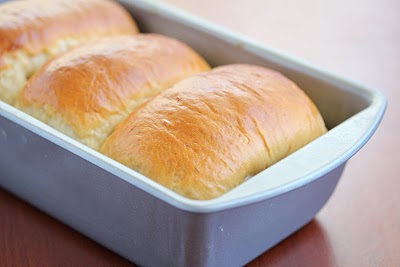
Hokkaido Milk Toast
Ingredients
- 540 g bread flour
- 86 g caster sugar
- 8 g salt
- 9 g milk powder
- 22 g instant yeast
- 86 g whisked egg plus 1 egg for wash
- 59 g heavy cream
- 54 g nonfat milk
- 184 g tangzhong
- 49 g unsalted butter melted
Instructions
- In the bowl of a stand mixer fitted with a dough hook, combine the flour, sugar, salt, milk powder, and yeast. Make a well in the center of the dry ingredients and add 86 grams of egg, cream, milk, and tangzhong. Combine the ingredients on medium speed until the dough starts to come together. Add the butter and continue kneading the dough for 20 minutes or until it is smooth and elastic. The dough is ready once you can stretch it very thin without it breaking. Once it does break, the break should form a circle. Grease a large bowl. Place the dough in the bowl, cover it with plastic wrap, and leave it in a warm place for 40 minutes, or until it has doubled in size.
- Transfer the dough to a floured work surface. Divide the dough into six equal parts, cover them with plastic wrap, and rest them for 15 minutes at room temperature.
- Roll out each dough ball into an oval shape. Fold 1/3 from the top edge to the middle and press. Fold 1/3 from the bottom to the middle and press. Flip the dough over and roll it until it's approximately 30 cm long. Flip the dough over and, with the seam side up, roll it into a cylinder. Repeat this process with the other dough balls.
- Place the rolls, seam side down, in a loaf pan (three rolls in each pan). Cover the pans with plastic wrap until the rolls have doubled in size.
- Preheat the oven to 356°F (180°C) Whisk the egg in a small bowl and brush it on the top of the rolls. Bake the rolls for 30 to 35 minutes or until the tops are golden brown. Cool the rolls on a wire rack before serving.
Notes
- Tangzhong is a flour and water mixture that is cooked to a certain temperature. It's added to the dough and is what gives the bread its soft and fluffy texture. The instructions for making it are in my Soft and Fluffy Milk Toast post. You just need to make the tangzong (not the whole recipe), chill it, and then use a kitchen scale to portion out 184 grams of it to use in this recipe. You will have leftover tangzhong, which can be stored in the refrigerator for a couple of days to use in another recipe.
The nutrition information provided are only estimates based on an online nutritional calculator. I am not a certified nutritionist. Please consult a professional nutritionist or doctor for accurate information and any dietary restrictions and concerns you may have.

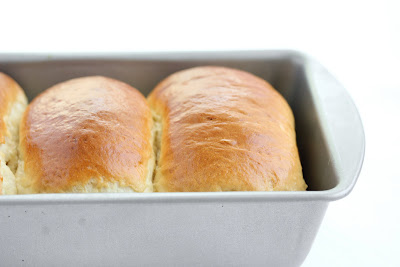
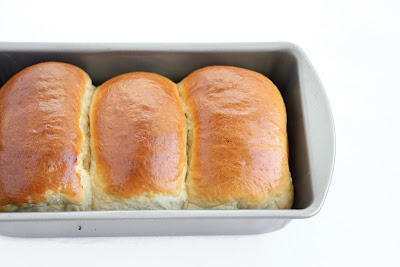

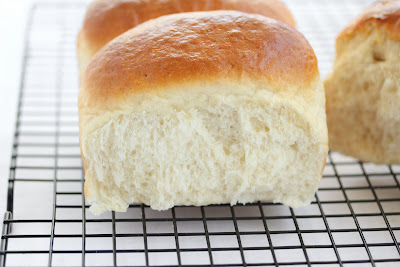
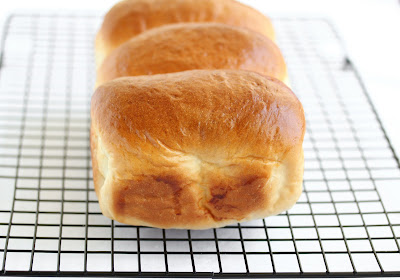


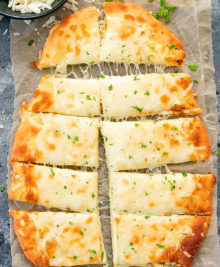
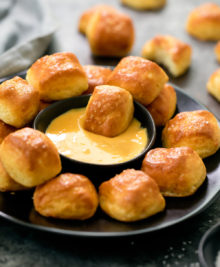
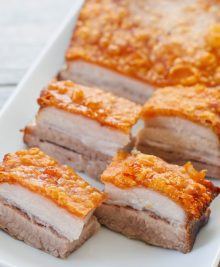
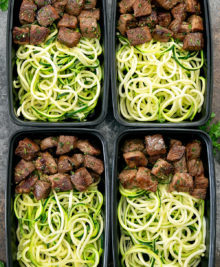
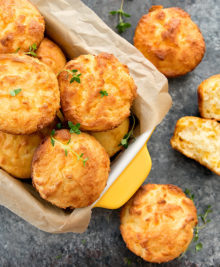
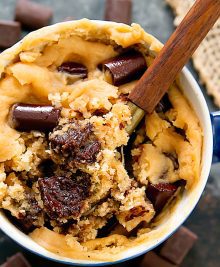
I like this bread. 🙂
FYI
The ingredient ratios in the recipe are really from japan, but not necessarily from hokkaido.
Yet when this bread first came out of the bakery market in Asian cities like Taiwan and Hongkong , the main promotional gimmick is that the bread is made with Hokkaido farm milk which is famous for its richness in flavor and milk fat content that contributes to the softness and fluffiness. Also the retail price of this Japanese milk is almost double of that of milk from other countries.
THAT’s why this pricey bread is named “HOKKAIDO MILK” bread
thanks for sharing!
Ok so in other words the TZ here are made from extra flour and water in addition to your original receipe for flour and water am I correct?
yes that is correct!
Hi, your receipe requires 540g fl and 54gm milk, do you make the TZ using part of the flour n milk fm your original receipe or is the TZ made using extra flour n milk outside the receipe? From my understanding of TZ it is made from part of the flour n water within the original receipe and if so I have to minus out the total flour and liquid from your original receipe to make it work.
Hi Betty- the TZ is made separately. The ingredient measurements listed are only for making the bread and does not include the ingredients needed to make the TZ
Hi,
Is your recipe already a converted one or do we have to do the calculation to minus the flour and water content from your original recipe for the tangzhong ourselves? Reason being for tangzhong, it’s part of the total flour and water from the recipe rather then extra flour and water. A lot of recipe from the internet omit explaining this point and hence failure for those who tried it.
Hi, I’m not sure if I am understanding your question correctly. But, the link to make the TZ does make more than what is needed for the recipe. so you do need to make it and then measure out 185g of it. I hope that answers your question!
if I wanted to make this more like hoagie rolls is that possible? how would you suggest rolling out the dough to achieve say a 12″ roll?
Hi, I’ve never tried making them into another shape, so I’m not quite sure. I would use the same roll and fold method but maybe then stretch them out more to achieve your 12 inch roll. the bread is also on the sweet side so not sure if you are planning on making sandwiches or what with the hoagie rolls, these might not be the best.
Hi, What’s the difference between this one (Milk toast) and Hokkaido Toast in this post? https://kirbiecravings.com/2011/12/hokkaido-toast.html
different recipes, slightly different textures
Oh I would never 🙂 Thank you again for the recipe! I will be using it many times, I’m sure.
(This is the the link to the post: https://lapechefraiche.blogspot.com/2013/08/puddnhead.html)
This is a great recipe! It really is the softest and puffiest type of bread. (Pertaining to earlier comments, I used active dry yeast and simply bloomed it in the milk, which I warmed, before adding it to the other dry ingredients along with the wet.) I used the resulting bread to make roasted plum and dark chocolate bread puddings. I am linking to this post/recipe on my blog, I hope you don’t mind. Thank you! 🙂
Sounds delicious! I don’t mind if you link, as long as you don’t copy and paste the entire recipe. Thanks!
Nevermind don’t answer my question. I just saw another person that had the same question, so this might be redundant for you
Hey there! I love your bread recipe! Its one of the softest I’ve seen on the Internet. I just have a few questions I’d like to ask.
-I’d just like to know if it was absolutely necessary to shape the bread like how you did. Does it affect the texture or can I just bake it like normal bread?
-How would you store the bread to make it last longer & keep it moist longer?
Hi, I’d like to know which of your bread recipes is better or your favourite
https://kirbiecravings.com/2010/12/milk-bread-take-2.html
https://kirbiecravings.com/2010/11/soft-and-fluffy-milk-toast-and-how-to-keep-bread-soft.html
https://kirbiecravings.com/2011/05/hokkaido-milk-toast.html
The hokkaido one is my favorite, but the milk bread is a close second and I actually make that one more. The middle post you listed is actually the milk bread also but my first attempt. After I learned some more, I did a second post (the first link you listed).
Hi, love your bread btw. It looks like the perfect bread, light & fluffy :). Sorry for all the questions but I want my bread to be as perfect as yours.
1)I just wanted to ask whether all the liquid ingredients are measured by weight not volume. I’d just like to know because you wrote it in ‘gm’s
2)How do you store the bread to make it last longer because my breads always go stale in a few days before I have time to finish it.
3)Oh btw, why do you have to roll the dough out into that 3 roll shape,does it affect the texture of the bread, or can I bake it as one big dough?
1) weight
2) airtight plastic tupperware-type container should work. Though mine never lasts more than 3 days.
3) I don’t know why, but yes the method of 3 rolls does effect how the bread turns out.
Oh yeah now that yo mentioned I did use dry yeast will it be ok to substitute it with the active yeast? Thanks
The dry yeast is different. you have to activate with warm water. Also the measurement used would be different. I dont know how much you would have to use because I followed the recipes and always used active yeast
Oh I’ve used a wheat flour for bread flour is it correct? Thanks
No, actually wheat flour is not the same. Bread flour should just be labeled bread flour at the grocery store. Hope this helps
Hi there, just wondering can I substitute butter with oil? Also I tried using this recipe but my dough didn’t rise while proofing. Any idea what I did wrong? Thanks for the great recipe!
It sounds like maybe your yeast is no longer any good. Did you use active yeast? It’s not the same as the dried yeast which needs warm water to make it active again. Active yeast can die if it’s been stored too long and that would cause your bread not to rise. Also I would stick with butter. The oil would make the dough too wet.
Hello,
I am plan to running a small bakery which will be speciality focus on this Hokkaido bread,is there any machine you guys can recommended me for make that kind of bread
Thanks
sorry I actually do not use a bread maachine
Hi there. Thanks for posting the recipe for the hokkaido milk toast. The step by step photos helps a lot and gave me confident in making sure that I got it right. The toast came out wonderfully, and taste amazing. Thanks again, and I love your blog.
Yay, happy to hear you had success! I love this bread. =)
Can I use bread mix instead of bread flour or what about bread plain flour? Is that okay?
I dont think bread mix is the same. This recipe is meant to be used with bread flour.
I just came across your blog and would love to try this bread, but I was wondering what size bread pans you used?
It’s a 9 x 5 inch pan. Oops, I thought that was in the recipe, I guess not. I’ll have to change it
thanks for posting this recipe. have been making it ever since i saw your blog post and have even added several variations, did a matcha bread and a cranberry one.
I’m so glad you like this! Cranberry and matcha are great variations. I havent tried the cranberry, i’ll have to do that.
I’ve been wanting to make this for a long time now, and the recipe here seem to produce a perfect hokkaido milk loaf. Well done! However, the measurements you gave are a bit daunting- so precise > <.
Do the measurements have to be this precise or can I just round it up to the nearest 10 grams?
Thanks! ^^
The bread produced is pretty perfect. I always measure it precisely, so I’m not sure what will happen if you round up. I worry your dough might not work. I once tried adding some yam paste and the dough became unworkable.
okie dokie thank you ^^
i really wanna try this recipe cause it looks so yummy! 😀 i also bribed my little brother into reading harry potter with this >.> anywhoooo but i was just wondering what the measurements were in like cups and tbsp and such (i have no idea what it’s called i’m a bit of a baking novice TvT) cause i don’t own a scale so i can’t really do weight measurements =[ can it be done like the Milk toast you posted before?? pls and thank you ^^
(or if you could show me a good conversion website that’d be fantastic too ^^)
sankyuuuu~
Hi Ashley, it is possible to convert to cups but it would be an approximation. Unfortunately I do not have the conversions. For the milk toast, the original recipe I adapted did the conversions, which is why I had them. I’ve thought about figuring out the conversions, but it makes the recipe making a lot more time consuming. It is easier for me to just pour into a bowl until the scale reaches the point I want. Sorry I can’t be of much help. Good luck trying to find the conversions. I didn’t have a scale for a long time, but there were so many recipes that didn’t have conversions and many recipes that required very exact measurements (like macarons, where you really have to do everything by weight), that I ended up just buying a scale. It cost me $20, and I’ve used it for 2 years now and it comes in very handy. So maybe you want to think about getting one or asking for one as a gift.
That looks fantastic. Is there a great deal of difference between this bread and the milk bread that you posted up? Maybe in texture? Or perhaps taste?
A little bit of both. I feel this one is slightly lighter and softer, but also a little richer in taste because of the addition of the heavy cream. Both are yummy, but I think I prefer this one more.
Thanks! Also, you mentioned that the tangzhong increases the shelf life of the bread. Could you give me an approximate as to how long? Will be trying this recipe soon!
I have been able to keep the bread for about a week. Usually it gets eaten so fast, so it’s hard to tell. A lot of breads get stale a day or so after baking. these will definitely stay soft. i don’t know how long you can keep before it begins to mold, you might want to keep it in the fridge after a few days. Good luck with the recipe!